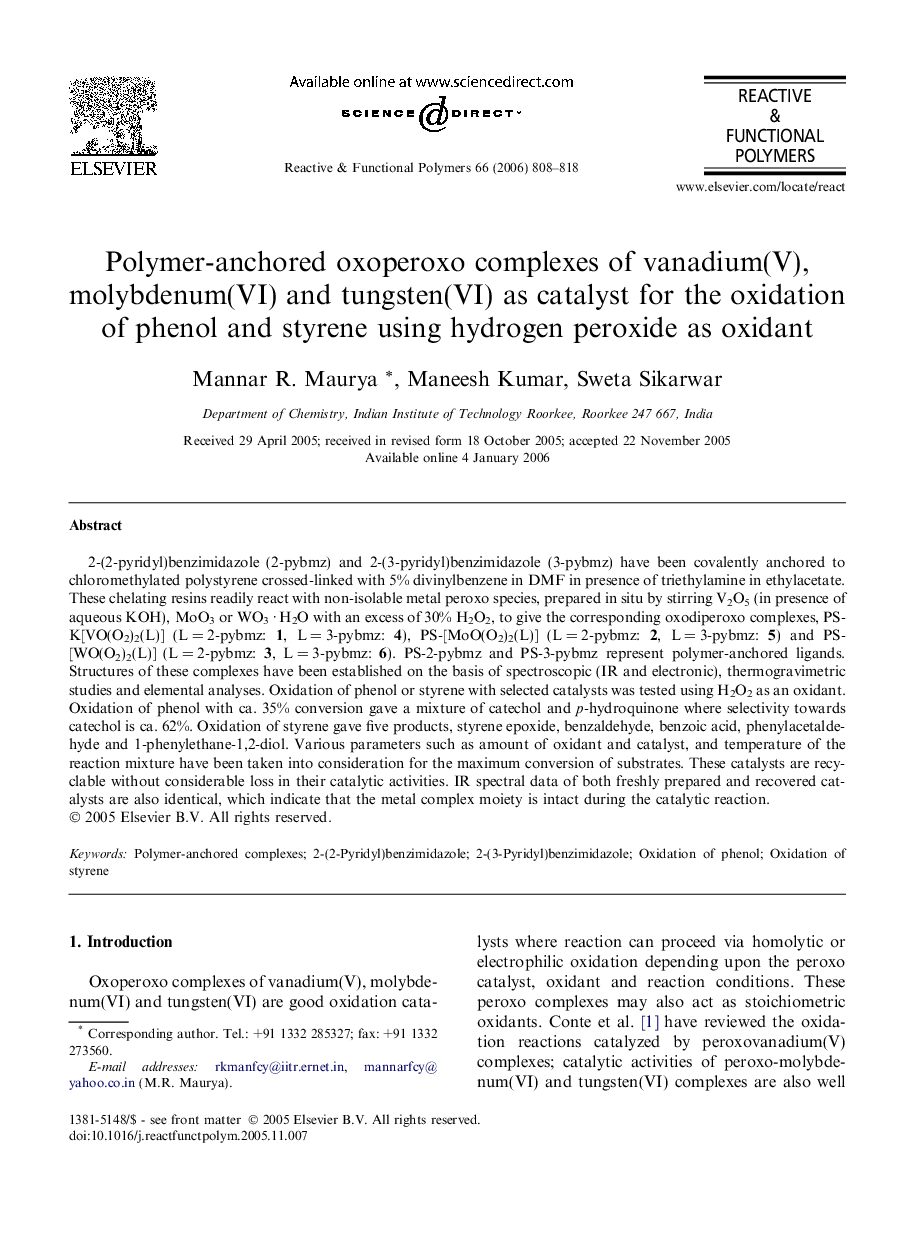| Article ID | Journal | Published Year | Pages | File Type |
|---|---|---|---|---|
| 5211125 | Reactive and Functional Polymers | 2006 | 11 Pages |
Abstract
2-(2-pyridyl)benzimidazole (2-pybmz) and 2-(3-pyridyl)benzimidazole (3-pybmz) have been covalently anchored to chloromethylated polystyrene crossed-linked with 5% divinylbenzene in DMF in presence of triethylamine in ethylacetate. These chelating resins readily react with non-isolable metal peroxo species, prepared in situ by stirring V2O5 (in presence of aqueous KOH), MoO3 or WO3 · H2O with an excess of 30% H2O2, to give the corresponding oxodiperoxo complexes, PS-K[VO(O2)2(L)] (L = 2-pybmz: 1, L = 3-pybmz: 4), PS-[MoO(O2)2(L)] (L = 2-pybmz: 2, L = 3-pybmz: 5) and PS-[WO(O2)2(L)] (L = 2-pybmz: 3, L = 3-pybmz: 6). PS-2-pybmz and PS-3-pybmz represent polymer-anchored ligands. Structures of these complexes have been established on the basis of spectroscopic (IR and electronic), thermogravimetric studies and elemental analyses. Oxidation of phenol or styrene with selected catalysts was tested using H2O2 as an oxidant. Oxidation of phenol with ca. 35% conversion gave a mixture of catechol and p-hydroquinone where selectivity towards catechol is ca. 62%. Oxidation of styrene gave five products, styrene epoxide, benzaldehyde, benzoic acid, phenylacetaldehyde and 1-phenylethane-1,2-diol. Various parameters such as amount of oxidant and catalyst, and temperature of the reaction mixture have been taken into consideration for the maximum conversion of substrates. These catalysts are recyclable without considerable loss in their catalytic activities. IR spectral data of both freshly prepared and recovered catalysts are also identical, which indicate that the metal complex moiety is intact during the catalytic reaction.
Keywords
Related Topics
Physical Sciences and Engineering
Chemistry
Organic Chemistry
Authors
Mannar R. Maurya, Maneesh Kumar, Sweta Sikarwar,
